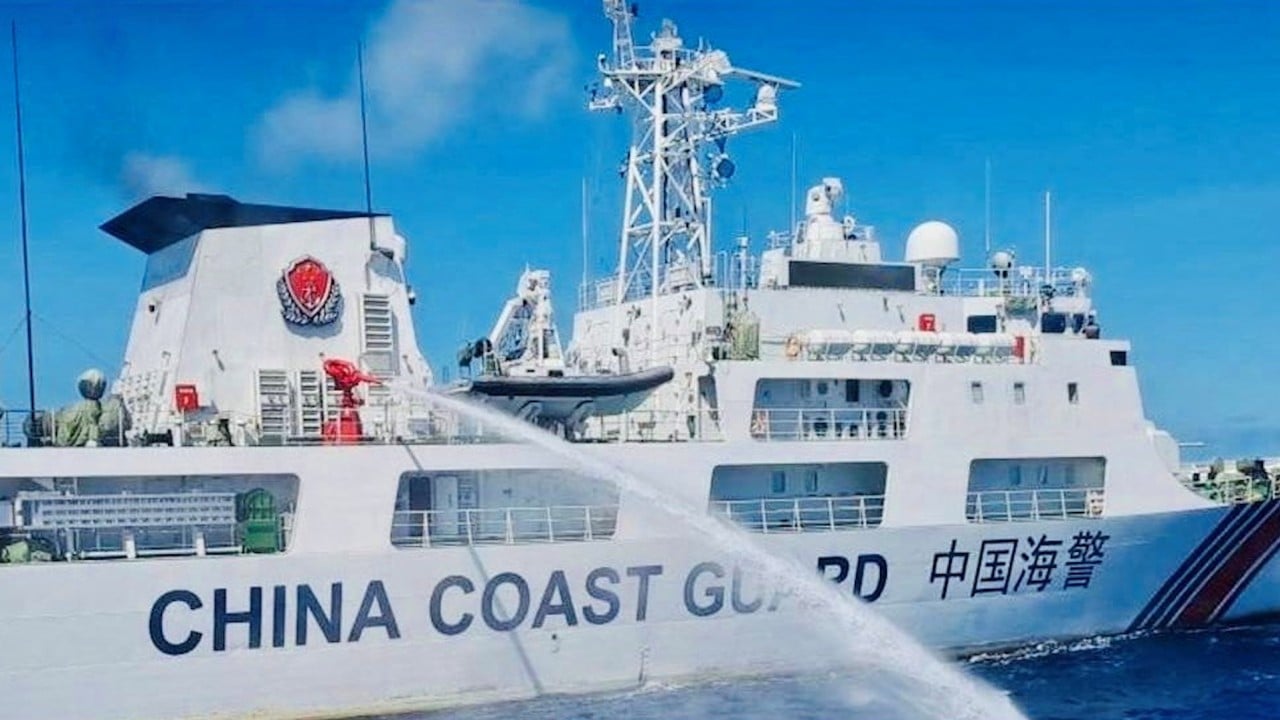
South China Sea: no risk of imminent war with Philippines over disputed claims, Beijing think tank says
- South China Sea Strategic Situation Probing Initiative says Manila cannot win on its own, and the US is not interested in getting directly involved
- Report comes as repeated confrontations in disputed areas of resource-rich South China Sea spark concerns over a possible hot conflict
This is because the Philippines cannot beat China on its own, and the US is not interested in getting directly involved in any such conflict, the South China Sea Strategic Situation Probing Initiative (SCSPI) said.
“The United States hopes to use the Philippines’ geographical location … to contain China, but it does not want to be unnecessarily involved in an armed conflict with China because of the Philippines’ agenda,” the Beijing-based think tank said in its latest annual report.
SCSPI director Hu Bo said while the Philippines appeared to be turning into a “proxy” for US interests aimed at countering Beijing, there was “no possibility of a proxy war”, given that rival South China Sea claimants including Manila would not be able to win if the US did not get involved.
“The United States does not want to fight, and the Philippines and Vietnam do not dare to fight,” Hu told a panel discussion to mark the report’s release on Friday.
This comes amid continued confrontations between Chinese and Philippine vessels in disputed areas of the resource-rich waterway over the past year.
The latest encounter took place on Saturday, in the second such stand-off this month, with Manila saying water cannons fired by the Chinese coastguard at a supply ship off the Second Thomas Shoal had damaged the vessel and injured its crew. The Philippine-controlled shoal is part of the Spratly Islands chain claimed by both countries and called Nansha in Chinese.
The repeated stand-offs have raised concerns over the likelihood of a conflict, with the United States getting involved to defend its treaty ally, the Philippines.
Reporters witness Beijing’s clash against Philippine ships in South China Sea
The US has also emphasised that it would be treaty-bound to defend the Philippines if its military, ships or aircraft were to come under armed attack.
The resupply missions serve a small number of troops stationed by Manila on a warship that it purposely grounded off the shoal to reinforce its sovereignty claims in 1999.
“The United States hopes that trouble will happen every day in the South China Sea, but at this stage, it does not want ‘big trouble’ to happen there. It is not yet ready and determined to have a military showdown with China,” the report said.
According to Hu: “The good news is that in the foreseeable future, there should be no armed conflict [in the South China Sea].”
He said US actions so far had been “restrained” and its top priority was to “deter” China, rather than start a war, adding that both countries wanted their ties to stabilise.
The SCSPI annual report studies US military activities in the region. According to Friday’s edition, the frequency of US Navy aircraft carrier strike group activities in the South China Sea last year was the same as in 2022, but their duration had increased significantly.
US warships also made fewer Taiwan Strait transits last year, the report said, though aerial transits had increased.
It also said Washington had increased the hype around its operations and stepped up efforts to use its regional allies to pressure Beijing.



